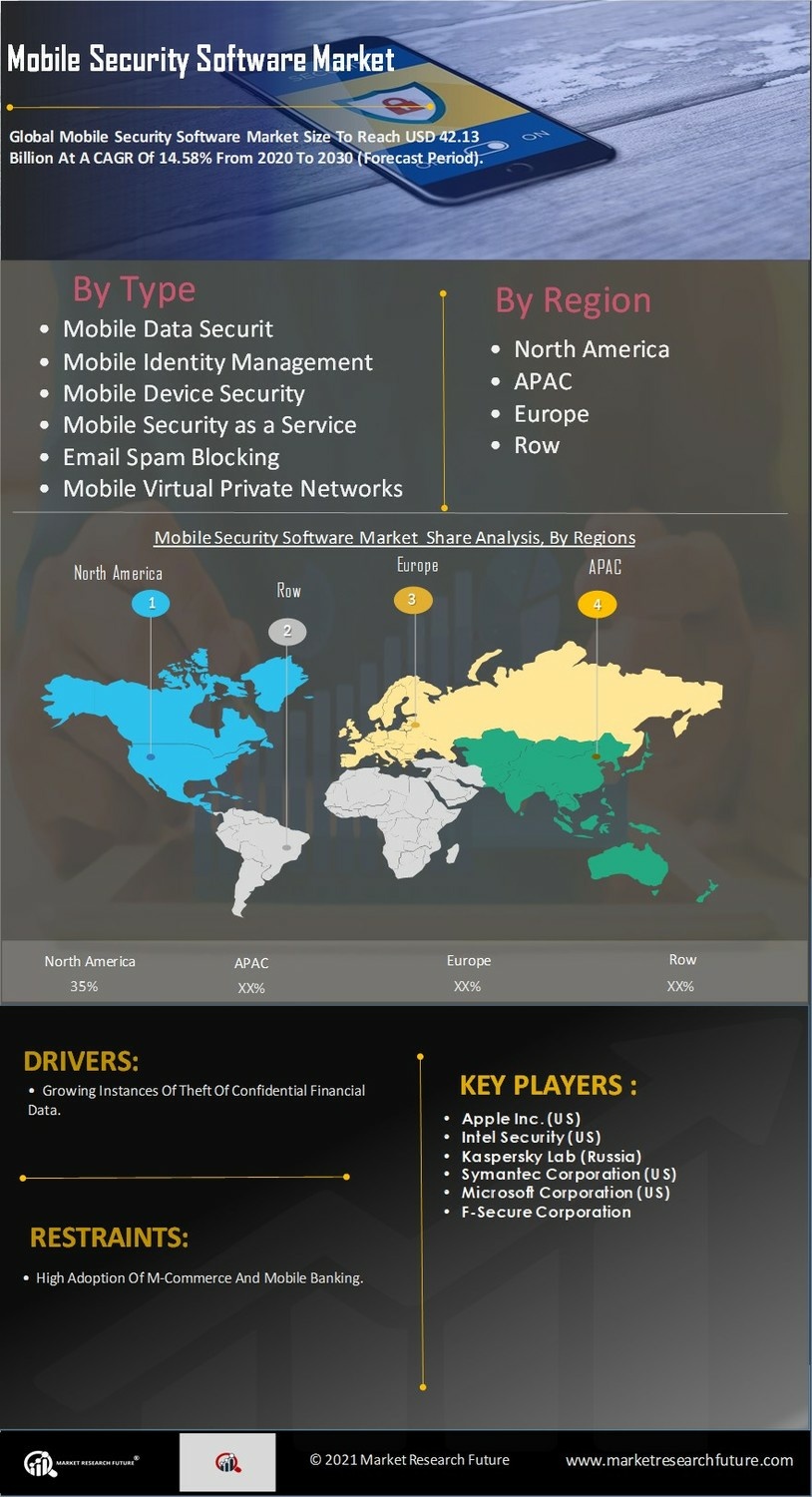Increased Use of IoT Devices
The proliferation of Internet of Things (IoT) devices is a significant driver for the Mobile Security Software Market. As more devices connect to mobile networks, the potential attack surface for cyber threats expands. IoT devices often lack robust security features, making them vulnerable to exploitation. This vulnerability raises concerns among consumers and businesses alike, prompting a demand for comprehensive mobile security solutions that can protect interconnected devices. The integration of mobile security software with IoT ecosystems is becoming essential to mitigate risks associated with device interconnectivity. As the IoT landscape continues to evolve, the Mobile Security Software Market is likely to experience substantial growth as organizations seek to secure their networks.
Rising Cybersecurity Threats
The Mobile Security Software Market is experiencing a surge in demand due to the increasing frequency and sophistication of cyber threats. As mobile devices become more integral to daily life, they also become prime targets for cybercriminals. Reports indicate that mobile malware attacks have escalated, with a notable increase in phishing attempts and ransomware targeting mobile platforms. This alarming trend compels businesses and individuals to invest in robust mobile security solutions to safeguard sensitive information. The market is projected to grow as organizations prioritize cybersecurity measures, reflecting a heightened awareness of the risks associated with mobile technology. Consequently, the Mobile Security Software Market is likely to expand as consumers seek reliable protection against evolving threats.
Consumer Awareness and Education
The Mobile Security Software Market is benefiting from increased consumer awareness regarding mobile security risks. As individuals become more informed about the potential threats associated with mobile device usage, they are more inclined to invest in security solutions. Educational campaigns and media coverage have played a crucial role in highlighting the importance of mobile security, leading to a shift in consumer behavior. Reports suggest that consumers are now more proactive in seeking out mobile security software to protect their personal data. This heightened awareness is expected to drive demand in the Mobile Security Software Market, as consumers prioritize their digital safety and seek reliable solutions to mitigate risks.
Regulatory Compliance Requirements
The Mobile Security Software Market is significantly influenced by the need for compliance with various data protection regulations. Governments and regulatory bodies are increasingly implementing stringent laws to protect consumer data, such as the General Data Protection Regulation (GDPR) and the California Consumer Privacy Act (CCPA). Organizations are mandated to ensure that their mobile applications adhere to these regulations, which often necessitates the integration of advanced security features. As a result, companies are investing in mobile security software to avoid hefty fines and reputational damage. This regulatory landscape is expected to drive growth in the Mobile Security Software Market, as businesses strive to meet compliance standards while maintaining consumer trust.
Growing Adoption of Mobile Payment Solutions
The Mobile Security Software Market is witnessing growth fueled by the rising adoption of mobile payment solutions. As consumers increasingly prefer digital transactions over traditional methods, the security of these transactions becomes paramount. Mobile payment platforms are often targeted by fraudsters, leading to a heightened demand for security software that can protect sensitive financial information. According to industry reports, the mobile payment market is projected to reach substantial figures in the coming years, further emphasizing the need for effective security measures. Consequently, businesses are investing in mobile security software to ensure secure transactions, thereby driving the growth of the Mobile Security Software Market.


















Leave a Comment